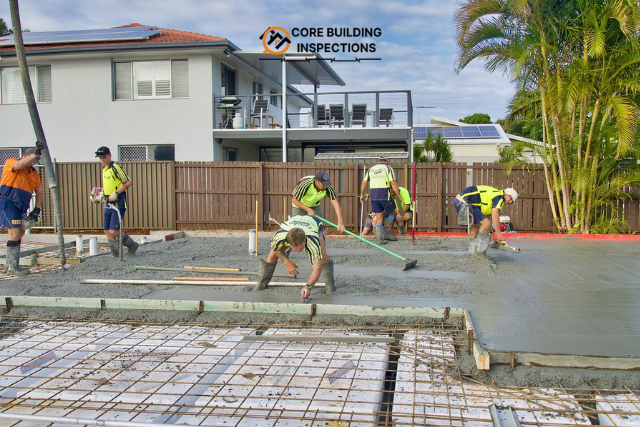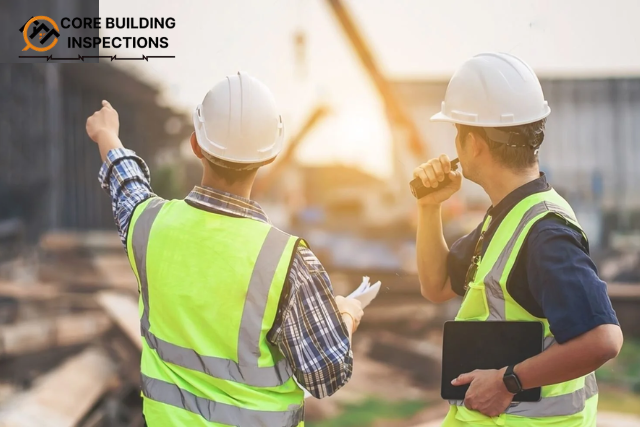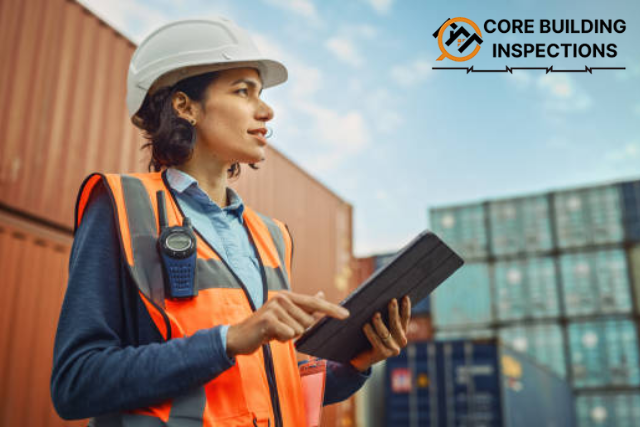Why Slab Inspections Are Trending in Melbourne Builds

7 Reasons to Get a Pre-Buy Home Inspection in Melbourne
September 15, 2025
7 Tips for a Successful Pre-Purchase House Inspection in Victoria
September 29, 2025Melbourne’s building scene is changing, and one big thing is that everyone wants pre slab pour inspection done before the concrete goes in. It used to be just for massive projects, but now even homes and smaller buildings are getting them.
Why is this happening? Why are builders, developers, and homeowners in Melbourne suddenly so interested in slab inspections? Let’s look at why this is now a thing, what good they do, what you can expect during one, and why skipping one might really hurt your wallet later.
What Is a Slab Inspection?
A slab inspection is when someone checks things out before they pour the concrete for a building’s foundation. They want to make sure everything’s in the right place, like the pipes, frames, steel supports, and защиты from water and termites. It all has to follow the rules and match the building plans.
Usually, you’ll have a licensed inspector or engineer do this. It’s super important because it’s way better to catch problems before they’re buried in concrete and turn into a budget killer.
Why Slab Inspections Are Becoming More Common in Melbourne
1. Rapid Growth in New Home Builds
Melbourne’s still growing super fast, so tons of new houses are popping up. With more builders around, making sure everything’s built right, especially the foundations, is a must. Since the slab is the base of the whole house, any mistakes there can cause problems later on. Getting slab inspections in such a busy market just makes sense because it keeps the quality high and gives you confidence.
2. Increasing Awareness Among Homeowners
Thanks to online resources, forums, and social media, Melbourne homeowners and first-time builders are more informed than ever. There’s growing awareness around the risks of poor slab construction, such as:
-
Slab heave or movement
-
Cracks in walls and floors
-
Water pooling and drainage issues
-
Termite entry points due to improper barriers
Homeowners are realising that preventative inspections are cheaper and smarter than repairs years down the line.
3. Stricter Compliance and Regulatory Oversight
The Victorian Building Authority (VBA) and other regulatory bodies have tightened rules around building compliance, especially with increasing cases of construction faults across the state. Builders are now held more accountable, and slab inspections are a proactive step toward meeting compliance requirements and avoiding penalties.
4. Poor Workmanship and Speedy Builds
In a booming construction market, many projects are rushed to meet deadlines. This often leads to corner-cutting and poor workmanship, particularly in early stages like slab preparation. A slab inspection helps identify if:
-
Reinforcements are properly placed
-
Concrete cover meets standards
-
Plumbing and electrical conduits are correctly installed
-
Waterproofing and vapor barriers are intact
Inspectors act as a neutral third party, ensuring all work is done right before it’s set in concrete — literally.
What a Slab Inspection Covers
A professional slab inspection checks several key areas, including:
-
Site Preparation
-
Soil compaction
-
Site leveling and clearing
-
-
Formwork
-
Correct alignment and dimensions
-
Proper support and bracing
-
-
Steel Reinforcement
-
Mesh and bars correctly placed
-
Adequate spacing and concrete cover
-
Tie wire connections and laps
-
-
Plumbing and Electrical
-
Pipes and conduits positioned per plan
-
Protective wrapping of pipes to prevent corrosion
-
-
Termite Protection
-
Chemical or physical barriers properly installed
-
-
Moisture and Vapor Barriers
-
Plastic sheeting correctly laid and sealed
-
No tears or overlaps
-
-
Drainage Provisions
-
Adequate slope and exit paths for stormwater
-
After the inspection, a detailed report is provided with photos, notes, and any defects that must be rectified before concrete is poured.
Benefits of Slab Inspections
Catch Defects Early
Once concrete is poured, any mistake becomes permanent — or incredibly expensive to fix. A slab inspection allows you to identify and fix errors at the most critical stage.
Ensure Long-Term Structural Stability
A properly constructed slab ensures your home remains structurally sound, preventing cracks, movement, or moisture damage over time.
Protect Your Investment
Whether you’re a homeowner or a developer, a slab inspection protects your financial investment by reducing future maintenance and repair costs.
Legal and Insurance Compliance
Insurers and certifiers often require evidence of slab inspections to provide cover or issue occupancy certificates. It’s also a valuable legal safeguard in disputes with builders.
Peace of Mind
Having a qualified inspector verify everything is done right gives you confidence to move forward with your build — knowing your foundation is solid.
What Happens If You Skip a Slab Inspection?
Many owners assume that if the builder is licensed, inspections aren’t necessary. Unfortunately, this trust can be misplaced. Common problems when slab inspections are skipped include:
-
Incorrect slab height or thickness
-
Poor drainage leading to water issues
-
Misplaced plumbing, requiring jackhammering later
-
Voided termite warranties
-
Slab movement causing cracked tiles or uneven floors
Fixing these post-construction can cost tens of thousands of dollars.
Who Should Arrange the Slab Inspection?
In most cases, the owner (you) or your building consultant arranges the inspection. It’s recommended to hire an independent building inspector — not affiliated with your builder — to ensure a neutral and thorough evaluation.
Final Thoughts: Slab Inspections Are No Longer Optional
In Melbourne’s busy building scene, slab inspections by a trusted Melbourne building inspector are a must-do, not just an option. They’re a key quality check, making sure your building starts with a solid base that meets all the rules.
Construction costs are up, the rules are tighter, and buyers know their stuff. So, it makes sense that slab inspections are getting popular in Melbourne. If you’re a homeowner or developer, getting one is a smart way to protect your building, your cash, and save you worries.




